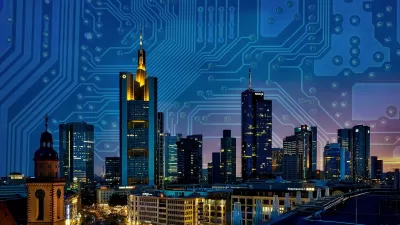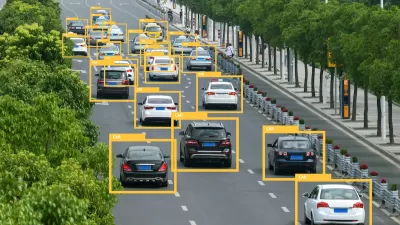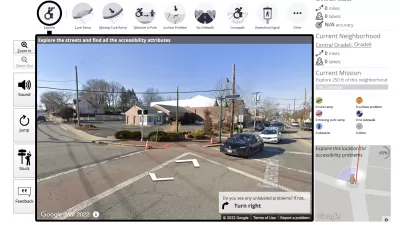As the pandemic forces cities to redefine their priorities, mayors around the country express their plans and hopes for technology and the 'smart city' of the future.

The 'smart city' concept, writes Danielle McLean, promises to "eliminate the hassles of urban life and make cities safer, greener and more efficient." But as the pandemic shifted priorities and technology did not deliver on its bold promises, Smart Cities Dive "wanted to find out what being a smart city means today and how cities are implementing smart-city initiatives throughout the country."
The article details responses from 15 large U.S. cities about their smart city plans, the limitations and challenges they've encountered in implementing technological fixes, and how they approach inequality.
In general, these respondents say the goal of smart cities is to improve residents’ quality of life. Local leaders say they achieve that goal by using technology and data responsibly as tools for decision-making and experimentation.
McLean describes the answers of mayors from around the country who describe the benefits they hope to derive from technology, including more efficient use of city resources, improved quality of life for residents, and enhanced public engagement. Many mayors express the hope that smart cities will prove to be more equitable and 'human-centered.'
FULL STORY: 15 city leaders define a 'smart city'

Study: Maui’s Plan to Convert Vacation Rentals to Long-Term Housing Could Cause Nearly $1 Billion Economic Loss
The plan would reduce visitor accommodation by 25,% resulting in 1,900 jobs lost.

North Texas Transit Leaders Tout Benefits of TOD for Growing Region
At a summit focused on transit-oriented development, policymakers discussed how North Texas’ expanded light rail system can serve as a tool for economic growth.

Why Should We Subsidize Public Transportation?
Many public transit agencies face financial stress due to rising costs, declining fare revenue, and declining subsidies. Transit advocates must provide a strong business case for increasing public transit funding.

How to Make US Trains Faster
Changes to boarding platforms and a switch to electric trains could improve U.S. passenger rail service without the added cost of high-speed rail.

Columbia’s Revitalized ‘Loop’ Is a Hub for Local Entrepreneurs
A focus on small businesses is helping a commercial corridor in Columbia, Missouri thrive.

Invasive Insect Threatens Minnesota’s Ash Forests
The Emerald Ash Borer is a rapidly spreading invasive pest threatening Minnesota’s ash trees, and homeowners are encouraged to plant diverse replacement species, avoid moving ash firewood, and monitor for signs of infestation.
Urban Design for Planners 1: Software Tools
This six-course series explores essential urban design concepts using open source software and equips planners with the tools they need to participate fully in the urban design process.
Planning for Universal Design
Learn the tools for implementing Universal Design in planning regulations.
Ascent Environmental
Borough of Carlisle
Institute for Housing and Urban Development Studies (IHS)
City of Grandview
Harvard GSD Executive Education
Toledo-Lucas County Plan Commissions
Salt Lake City
NYU Wagner Graduate School of Public Service





























